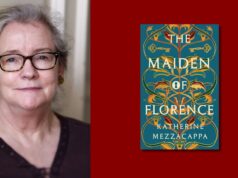
Éanlaith Iarthuaisceart Thír Chonaill|Maitiú Ó Murchú|LeabhairComhar|ISBN 978-1-7392551-3-8|€20
A labour of love, and a treasure trove—Maitiú Ó Murchú’s gallery of birds
by Cathal Póirtéir
On one of our windowsills usually sit a pair of binoculars and a couple of bird guides that I leaf through on occasions when I spot a bird I want to identify. The guides I have are succinct and scientific, and are fine in as far as they go—but I’m neither scientist nor ornithologist and find them a bit on the dry side, with measured wingspans, heights, tail lengths and so on. Accurate, rather than interesting details for the layperson.
Now however there is a bird book that I have been reading with pleasure. It entertains as much as it informs, including as it does, descriptions of the birds, their names in Irish and Latin (and often in the Gaelic of Scotland and the Isle of Mann as well as in Welsh).
Each birds gets a couple of pages with a photograph and a description of their habitats, their habits and the lore and history surrounding them, including place names and proverbs.

Treasure trove
Éanlaith Iarthuaisceart Thír Chonaill by Maitiú Ó Murchú is a treasure trove of information and a gallery of photography, with colour photographs and very readable articles on 120 birds that inhabit or visit north-west Donegal, where the writer and photographer has lived for more than half a century.
For many years Maitiú Ó Murchú could be spotted with his camera from Gaoth Barra to Gaoth Dobhair, and from Gleann Bheatha to Dún Fionnachaidh—as well as on some Donegal islands. Not surprisingly many of his photographs come from his home parish of Gaoth Dobhair.
An Chorr Mhóna is the name of the heron in Donegal but there are half a dozen names in Irish for the same bird in other places
The geographical area covered in the book is mostly Irish speaking and the author reflects this by using the local names for the birds, while often referencing other names in Irish found in other parts of the country. For example, An Chorr Mhóna is the name of the heron in Donegal but there are half a dozen names in Irish for the same bird in other places (the same is true of the same bird in English around the country).
Labour of love
Each photograph includes a reference to the townland where the photograph was taken, as well as the date, and allows us to see that all the photographs were taken by Maitiú in the last decade or so—but his knowledge was built up over a lifetime. It really is a most attractive and generous production running to over 260 pages – a labour of love that we can all now enjoy and benefit from.
the roots of the word ‘amateur’ identify a love of the subject
The author is quick to deny that the book is either a field guide or a reference book but rather an amateur production. That may be so but only to the extent that the roots of the word ‘amateur’ identify a love of the subject.
Readers will recognise the depth of knowledge and research that has gone into this work, both in the preparation of the photographs and the fascinating text. Sometimes the photograph is the only one he managed to take of a particular bird, others are more common and more easily photographed.
Legends and stories
What was believed about some of the birds is reflected in the legends, stories and superstitions that grew up around them and the work of the great Donegal folklore collector Seán Ó hEochaidh is acknowledged by reference to his work published in Béaloideas, the Journal of the Folklore of Ireland Society.
The author also gives us some of the historical background going back as far as notes made by Giraldus Cambrensis in his description of Ireland in the twelfth century.
There are photographs of birds in flight, on land, and in the water feeding, nesting and perching. Surprisingly perhaps Maitiú didn’t use any special hides or tripods in taking the photographs. Their standard and clarity show what can be achieved with a keen eye, a steady hand and lots of knowledge and even more patience.
There are photographs of birds in flight, on land and in the water feeding, nesting and perching
It’s not a book you would read from cover to cover but it is one to dip in and out of as the fancy takes you, or as needs be. I would venture to say that there isn’t a page where an average reader won’t discover something new and delightful about the birds that can be seen in Donegal and in many other parts of Ireland.
The publishers LeabhairComhar deserve recognition for the quality of the colour photographs, the production as a whole and for the readability of the book. More than anyone readers will be under an obligation to the author for sharing his enthusiasm.

Cathal Póirtéir has specialised in researching, presenting and commissioning Irish interest material in various radio formats and in books, including history, literature and folklore in Irish and English, as well as current affairs and drama.












